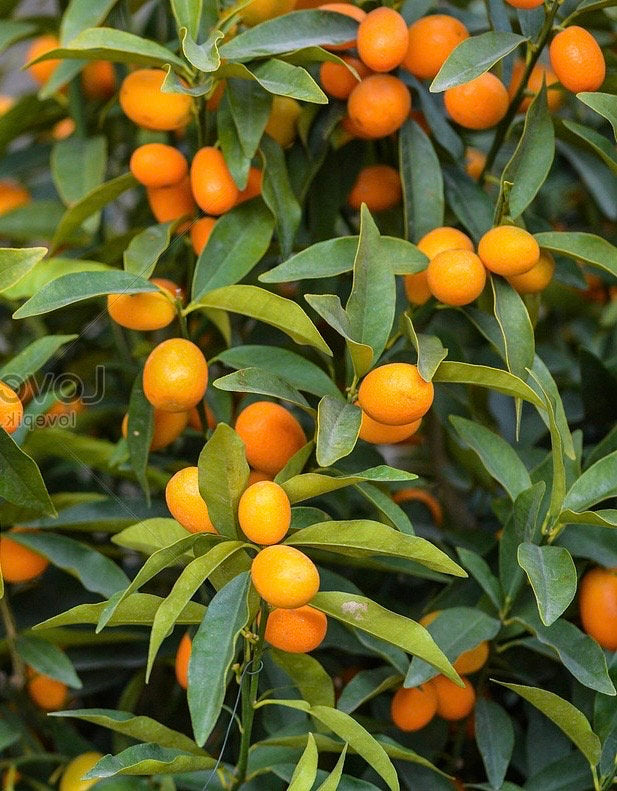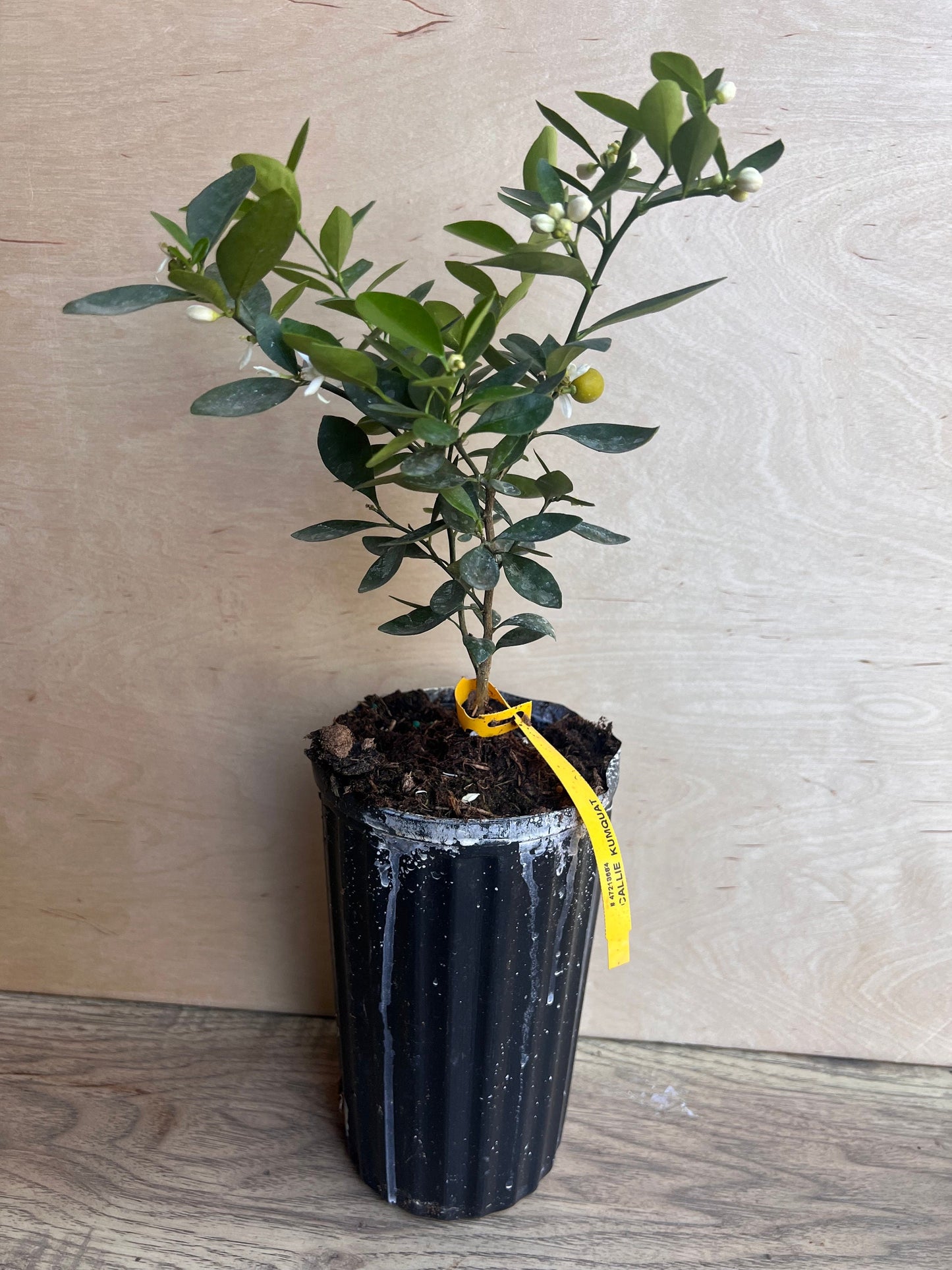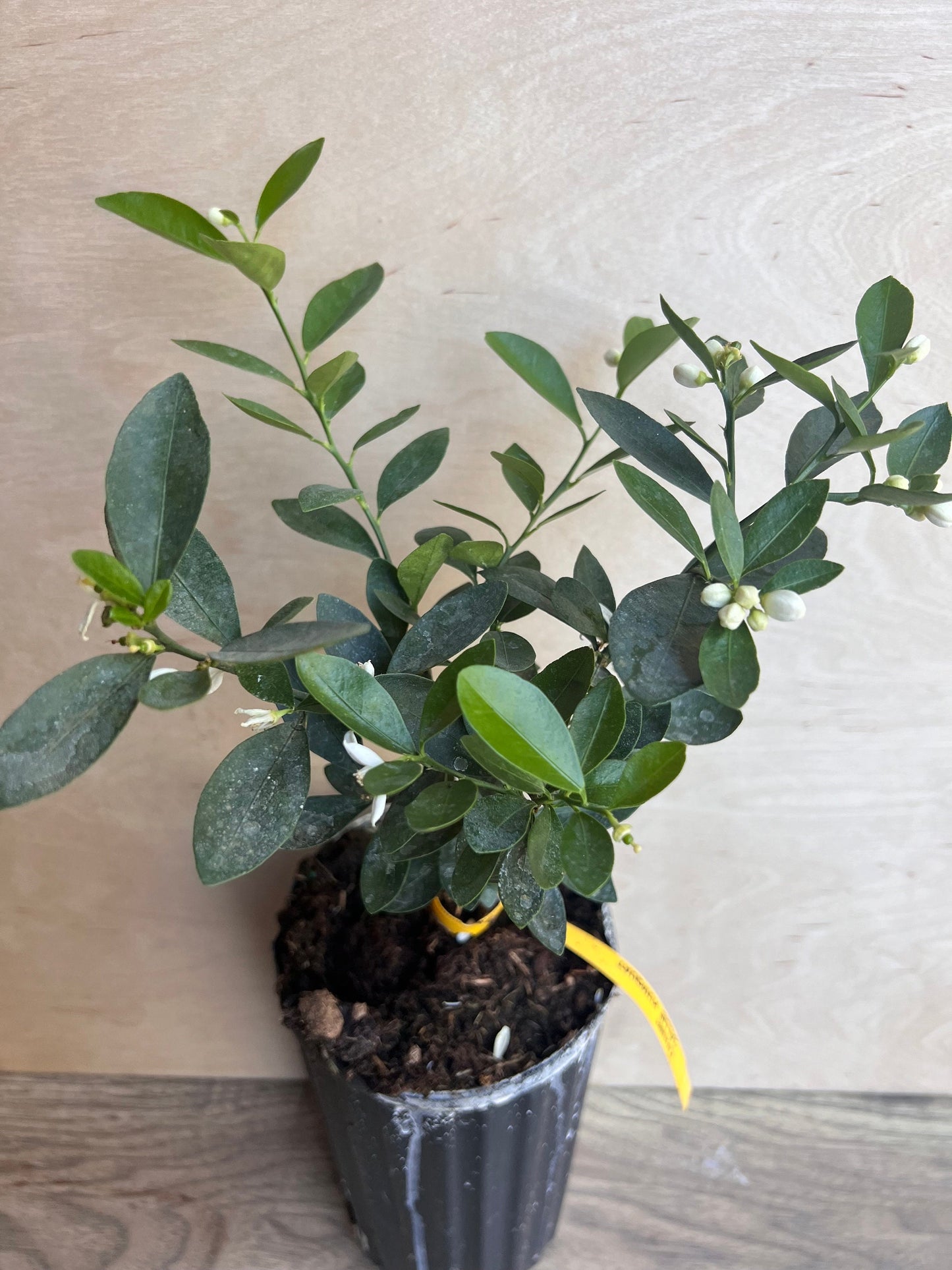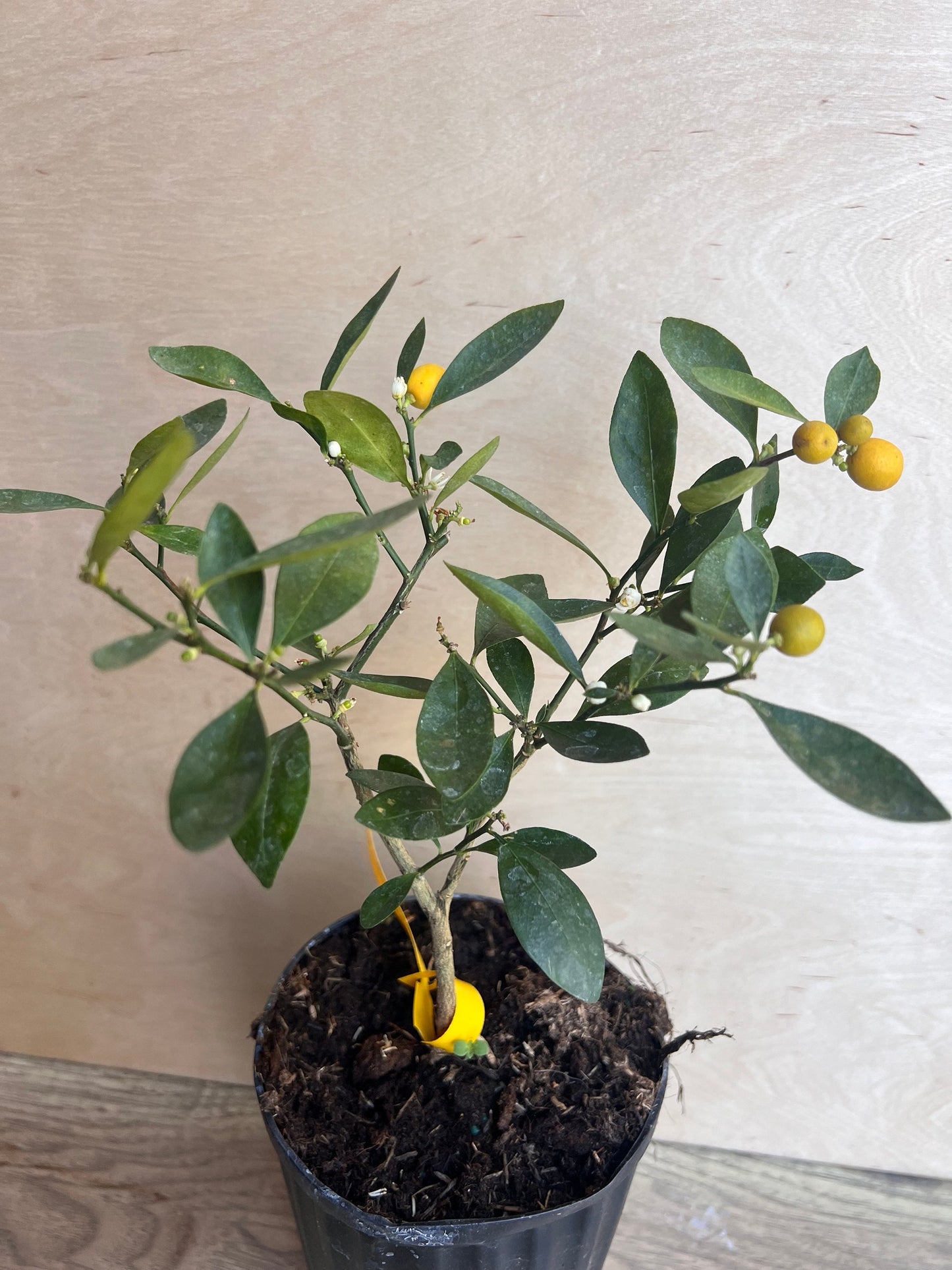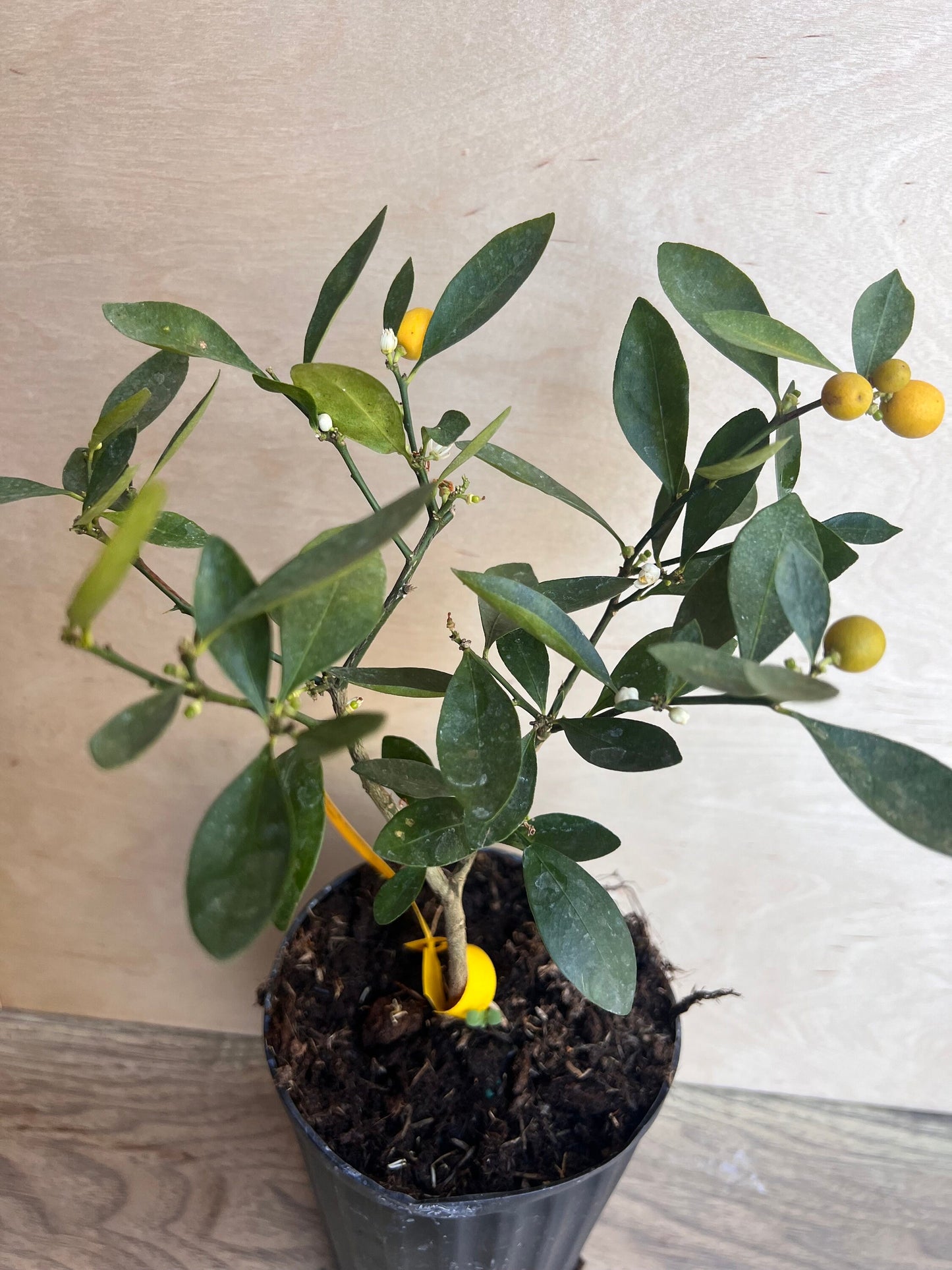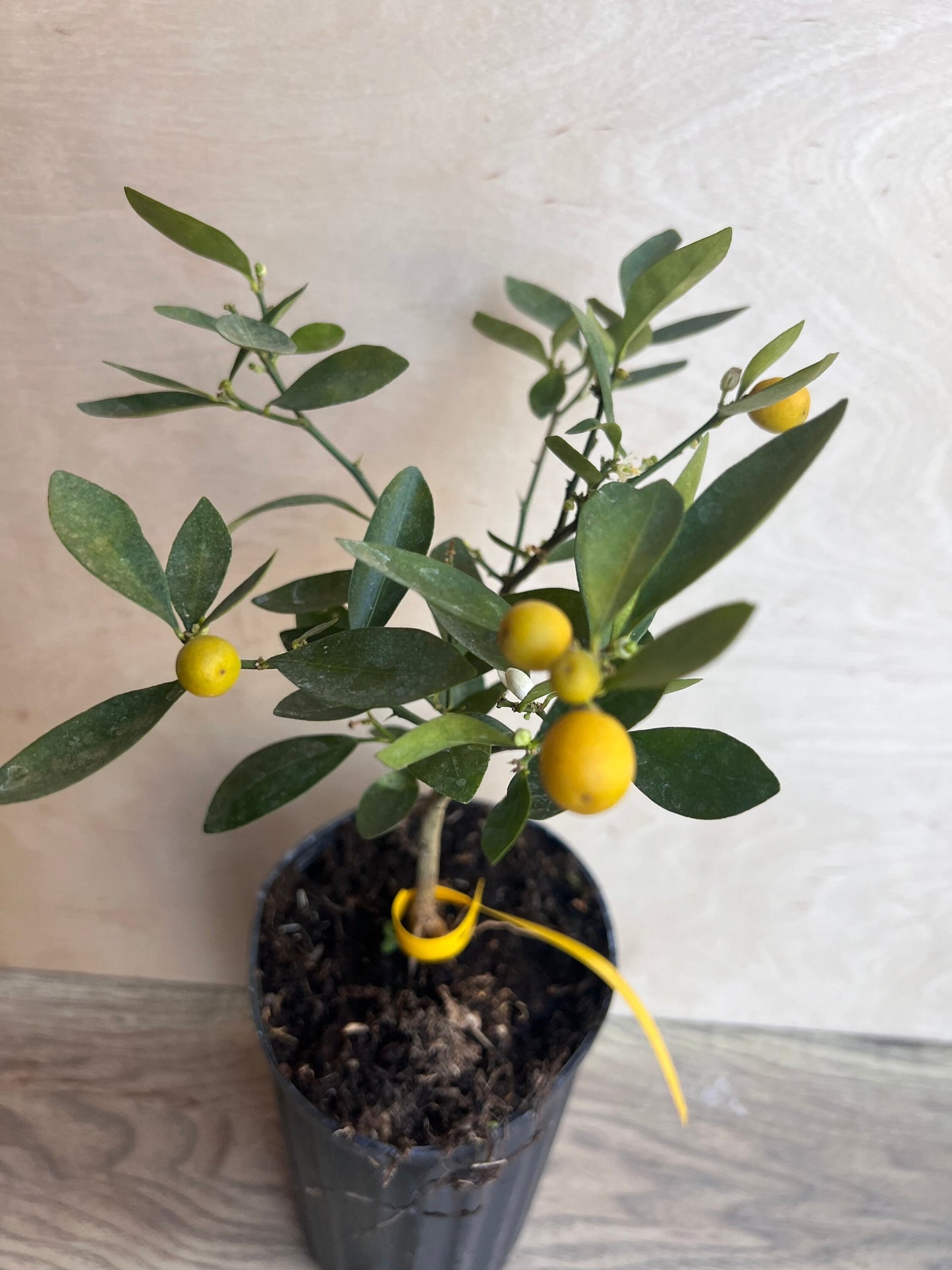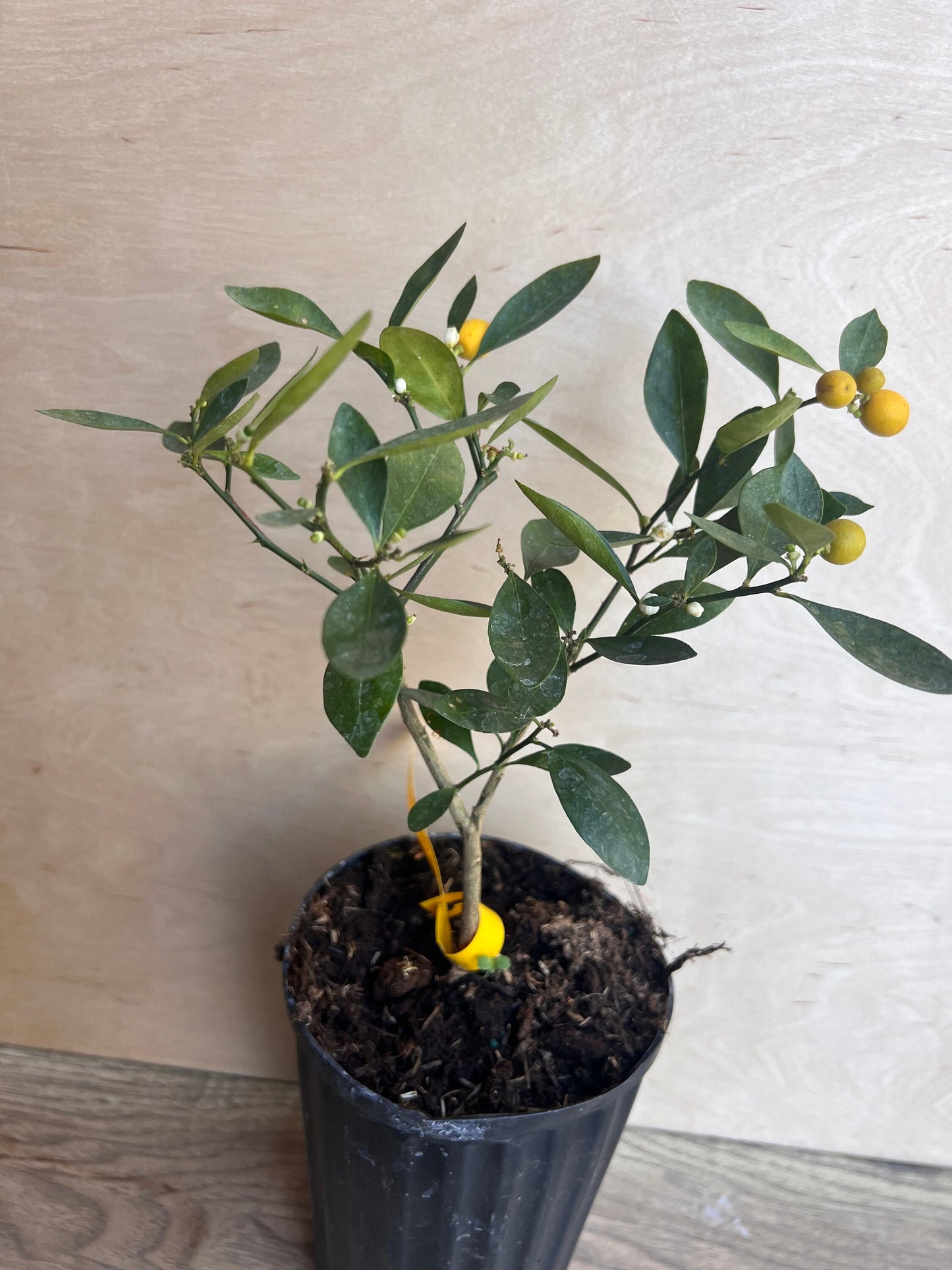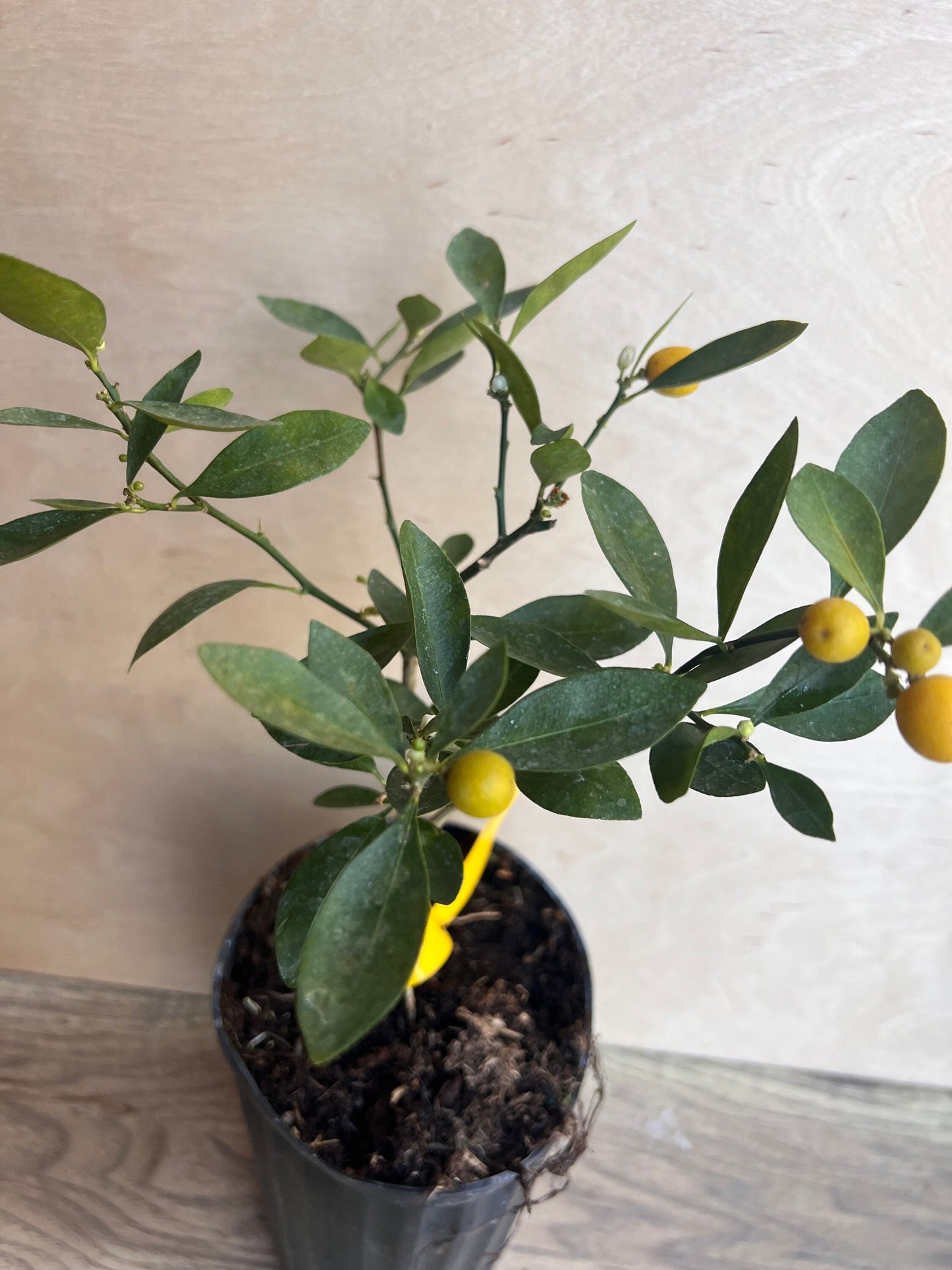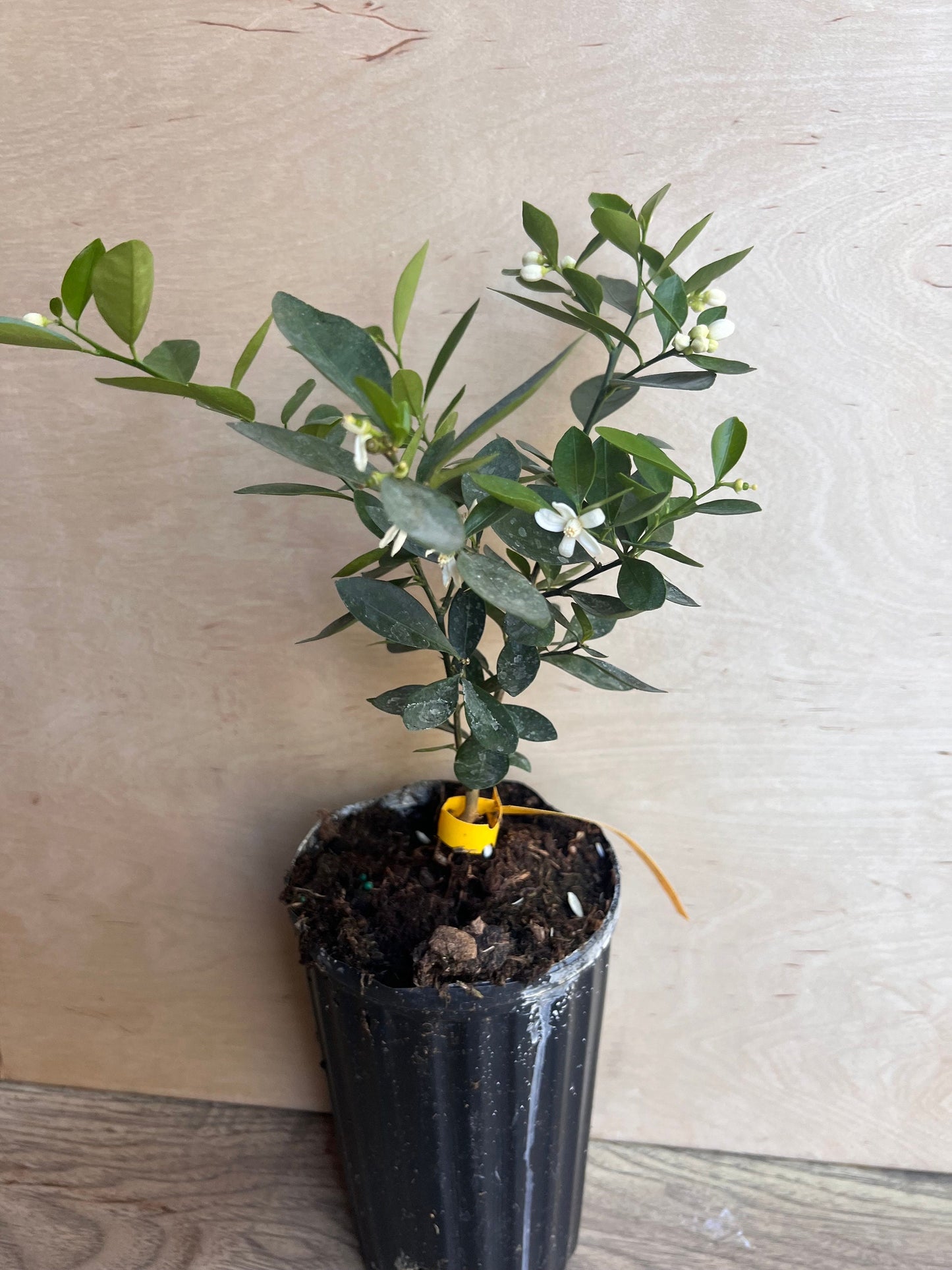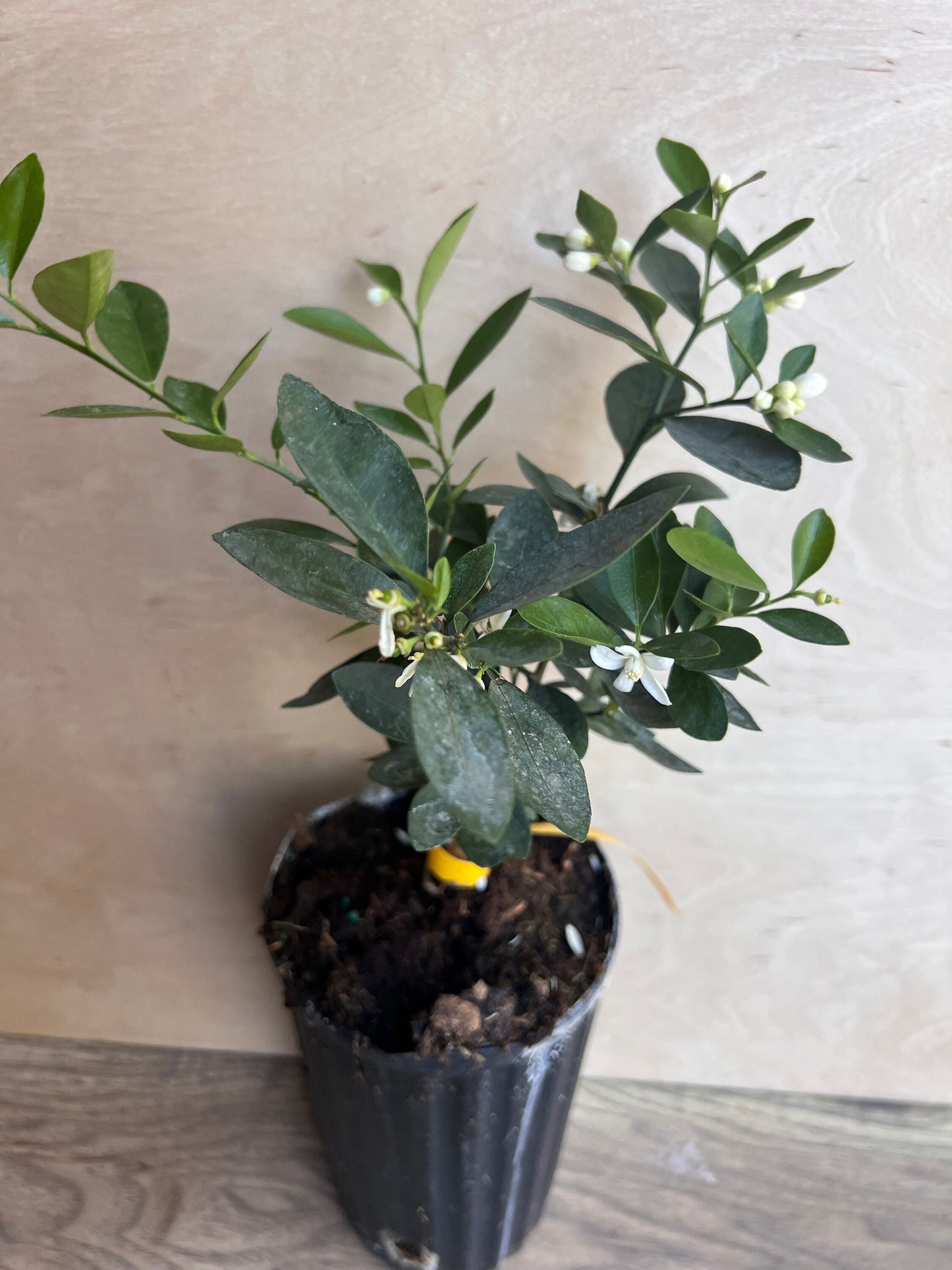1
/
of
10
Callie Kumquat in half gallon, Meiwa and Nagami Hybrid, Florida Shipping Only
Callie Kumquat in half gallon, Meiwa and Nagami Hybrid, Florida Shipping Only
Regular price
$43.83 USD
Regular price
$58.44 USD
Sale price
$43.83 USD
Unit price
/
per
Shipping calculated at checkout.
Couldn't load pickup availability
You will receive a Callie Kumquat in a 1/2-gallon pot, similar to the pictures.
The Callie Kumquat is a compact citrus tree known for its small, sweet, and tangy fruits, which can be eaten whole, rind and all. It’s perfect for indoor gardening or small outdoor spaces, offering vibrant foliage and edible fruit. Here’s how to care for your Callie Kumquat:
Light Requirements
- Full Sun: Kumquats need 8-10 hours of direct sunlight daily to thrive and produce fruit.
- Indoors: Place near a south- or west-facing window for maximum sunlight.
- Outdoors: Choose a sunny spot that gets full sun all day.
Watering
- Regular, Deep Watering: Keep the soil consistently moist, but not waterlogged. Water when the top 1-2 inches of soil are dry.
- Avoid Overwatering: Ensure good drainage to prevent root rot.
- Watering Frequency: Water more often during the growing season (spring and summer). In winter, reduce watering.
- Water Quality: Use rainwater or filtered water when possible. Let tap water sit for 24 hours to reduce fluoride and chlorine.
Temperature
- Warm Temperatures: Kumquats prefer temperatures between 60°F and 85°F (15°C to 29°C).
- Cold Sensitivity: Protect from frost and temperatures below 32°F (0°C).
- Indoors: Keep away from drafts, air conditioners, and heating vents.
Humidity
- Moderate to High Humidity: Ideal humidity is around 40-60%.
- Indoors: Use a humidifier or place the plant on a pebble tray (without the pot sitting in water) if your home is dry.
- Outdoors: Humidity is less critical as long as the plant is adequately watered.
Soil
- Well-Draining, Slightly Acidic Soil: Kumquats prefer loamy, well-draining soil with a pH of 5.5 to 6.5.
- For Containers: Use a citrus-specific potting mix or amend regular potting soil with perlite or sand.
- Outdoors: Ensure good drainage to prevent waterlogged roots.
Fertilizing
- Feed Regularly: During the growing season (spring and summer), use a balanced, slow-release citrus fertilizer or a high-potassium fertilizer every 4-6 weeks.
- Stop Fertilizing in Winter: Citrus trees slow growth in winter, so stop fertilizing.
- Organic Options: Use fish emulsion, compost tea, or worm castings for organic fertilizer.
Pruning and Maintenance
- Prune Regularly: Prune to maintain shape and improve airflow. Remove dead or damaged growth.
- Shape the Tree: Trim back any overly long or crossing branches to keep a compact, well-structured shape.
- Pinch Tips: Pinch back new branch tips during spring and summer to encourage bushier growth and more fruiting.
Pollination
- Self-Pollinating: Callie Kumquats don’t require another tree to produce fruit, but pollination is still needed. Bees or manual pollination with a brush can increase fruit yield.
Repotting
- Repot Every 1-2 Years: Repot your kumquat into a larger container as it grows. Choose a pot 1-2 inches larger and ensure proper drainage.
- Best Time to Repot: Spring, before the growing season begins.
Pests and Problems
-
Common Pests:
- Aphids: Treat with insecticidal soap or neem oil.
- Spider Mites: Increase humidity and treat with insecticidal soap or miticides.
- Scale Insects: Remove with neem oil or rubbing alcohol.
-
Common Issues:
- Yellowing Leaves: Could be from nutrient deficiency (especially iron), overwatering, or improper watering. Use a citrus-specific fertilizer and ensure proper drainage.
- Leaf Drop: Caused by low humidity, temperature fluctuations, or inconsistent watering.
- No Fruit Production: Could be due to insufficient light, improper pollination, or nutrient imbalances. Ensure proper light and care.
Toxicity
- Non-Toxic to Pets: Callie Kumquat is safe for cats and dogs, making it a pet-friendly plant.
Share
